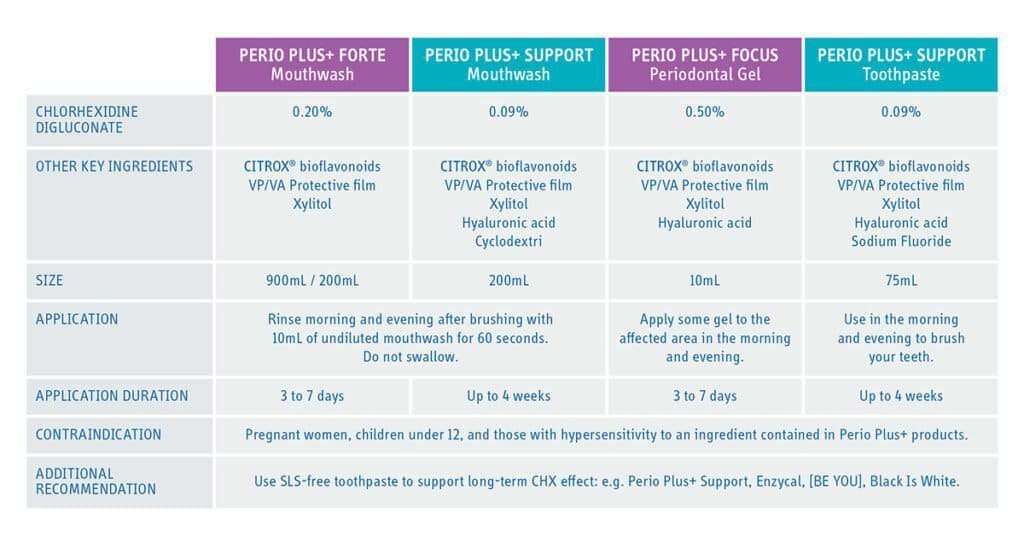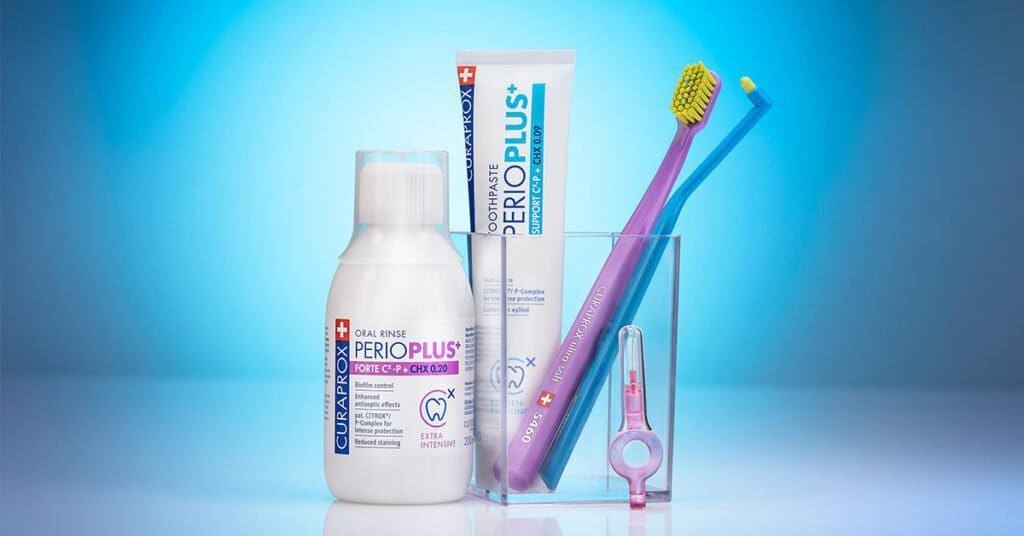Can a natural antibacterial agent extracted from bitter oranges be the modern equivalent of Chlorhexidine for oral rinses? Danny Chan gets the details from chemical plaque control expert, Dr Tihana Divnic-Resnik.
Citrox® is an exciting organic antibacterial agent that could be used in a whole new generation of mouthwashes.
While its strong antimicrobial and anti-inflammatory properties have been likened to those of Chlorhexidine (CHX) – currently one of the most widely used antiseptics for plaque control – Citrox® has demonstrated some benefits that could make it a formidable weapon in the battle against oral plaque.
Although yet early days, initial test results have so far been positive.
“We believe that Citrox® is proving itself as an important ingredient in efficient mouth wash solutions and together with cyclodextrins, will play a crucial role in the future of oral healthcare,” attests Dr Tihana Divnic-Resnik.

Dr Divnic-Resnik is a university-based researcher studying the potential uses of Citrox® as part of a broad exploration into different avenues of chemical plaque control. She is also involved in the research of Curaden’s CURAPROX Perio Plus+, an oral antiseptic range that combines Chlorhexidine with Citrox®.
Dr Tihana Divnic-Resnik is a Senior Lecturer at the University of Sydney. For 10 years, she served as lecturer in Periodontics and Oral Medicine at the University of Belgrade, Serbia, where she also practised as a specialist of Periodontology and Oral Medicine.
She currently practices at the Department for Periodontics at Sydney Dental Hospital. Dr Divnic-Resnik holds a master’s degree and PhD in Periodontology.
Part of your research involves debunking myths surrounding the use of chemical plaque control in dental clinical practice. Why do you think these misconceptions exist in the first place and how do you go about unravelling them?
Dr Tihana Divnic-Resnik: are many myths related to chemical plaque control, as its use extends to ancient civilisations that used mouth washes in the prevention and therapy of numerous oral diseases, including gingivitis and periodontitis.
The global market is loaded with new products. Under pressure to sell, manufacturers are sometimes presenting their products in the best light creating misconceptions that the product may be more effective than it really is, neglecting potential adverse effects.
However, from the aspect of prevention, it is important to emphasise that chemical plaque control should not be used routinely and that oral antiseptics should be used as adjunct to mechanical plaque control.
Plaque control with a toothbrush and an interdental brush/floss is of paramount importance and first choice in regular hygiene maintenance. Adjunctive use of oral antiseptics may further reduce colonisation of bacteria and alleviate gingival inflammation.
As dental professionals, we should be up to date with most recent evidence and choose products that are tested and proved to be effective and safe for our patients.

Chlorhexidine is one of the most widely used antiseptics for plaque control, but you also highlight its negative side effect of discolouration. Should dentists continue to recommend rinses containing Chlorhexidine?
TDR: Chlorhexidine (CHX) is a well-documented and effective antiseptic used for primary and secondary prevention of gingivitis and periodontitis as an adjunct to mechanical plaque control. Commonly, it is used as antibacterial mouth rinse at various concentrations twice a day for up to four weeks.
Although CHX exhibits broad antimicrobial spectrum and has outstanding substantivity, its major drawback is its ability to stain teeth and aesthetic restorative materials.
In the recent few years, due to widespread use of CHX not only in dentistry but also in medicine, concern has been raised in relation to increased number of cases of allergy to CHX as well as enhanced microbial tolerance. Such undesirable reactions have resulted in calls for modified clinical practice and exploration of alternative substances for oral care.
Until new approaches have been developed, CHX remains a viable choice in practice – provided that dentists and patients are aware of its potential adverse effects.
What can you tell us about Citrox® and its potential uses as an ingredient in the formulation of antiseptic mouthwashes, gel and toothpaste?
TDR: In the last few years, phytopharmaceuticals have been recognised to have an outstanding role in new drug delivery. Bioflavonoids are polyphenolic compounds, found in plants, with proven health benefits. Citrox® is a soluble formulation that contains natural bioflavonoid complex, derived from the Citrus aurantius (bitter orange), and organic acids.
Studies have shown its strong antimicrobial, anti-inflammatory, and anti-oxidative potential. Citrox® has broad antimicrobial spectrum and is very effective against bacteria, viruses, and fungi. Its mechanisms of action on cellular level are very similar to CHX.
In addition, Citrox® can attenuate microbial pathogenicity by targeting their enzymes and virulence factors, thus reducing their potential to cause disease. This property is of importance in combating CHX resistant microorganisms that have developed tolerance against certain antibiotics.
Used in combination with CHX in PerioPlus+, Citrox® demonstrated synergistic activity, which may enable using lower concentrations of CHX in oral health products and subsequently a reduction of its adverse effects.
We believe that Citrox® is proving itself as an important ingredient in efficient mouth wash solutions and together with cyclodextrins, will play a crucial role in the future of oral healthcare.
Based on your study on tooth staining caused by commercial mouthwashes, do you think Citrox® can help to counter the issue? If so, how?
TDR: Reducing concentration of CHX and supplementing it with another potential antiseptic such as Citrox®, may result in reduced side effects, whilst maintaining antimicrobial properties. Our in vitro study tested discoloration potential of PerioPlus+ mouthwashes on direct aesthetic restorative materials such as composite resins and glass ionomer cements.
In our tests, PerioPlus+ mouthwashes caused less staining in specimens of the tested aesthetic materials, as compared to similar concentrations of CHX. While the initial results look promising, these are still early days, and further studies are necessary to elucidate the role of Citrox® in reduction or prevention of staining.

Does your research on Perio Plus show it as a step in the right direction when it comes to designing the “rinse” of the future?
TDR: Positive results of in vitro studies demonstrated the potential of PerioPlus+ to overcome some of the drawbacks of CHX.
However clinical studies are necessary to confirm in vitro results and to further explore various indications for its clinical use.
Currently, we are designing clinical studies with our colleagues from Europe, and the University of Sydney will be one of the first centres to test PerioPlus+ mouth washes in the clinical settings.
We also aim to continue exploring various natural ingredients that might set standards for the future oral healthcare products.
References
Hooper SJ, Lewis MA, Wilson MJ, Williams DW. Antimicrobial activity of Citrox bioflavonoid preparations against oral microorganisms. Br Dent J. 2011 Jan 8;210(1):E22. doi: 10.1038/sj.bdj.2010.1224. PMID: 21217705
Jeyakumar J, Sculean A, Eick S. Anti-biofilm Activity of Oral Health-care Products Containing Chlorhexidine Digluconate and Citrox. Oral Health Prev Dent. 2020 Oct 27;18(1):981-990. doi: 10.3290/j.ohpd.a45437. PMID: 33215489
Malic S et al. Antimicrobial activity of novel mouthrinses against planktonic cells and biofilms of pathogenic microorganisms. Microbiology Discovery 2013 Microbiology Discovery. Doi:10.7243/2052-6180-1-11.
The information and viewpoints presented in the above news piece or article do not necessarily reflect the official stance or policy of Dental Resource Asia or the DRA Journal. While we strive to ensure the accuracy of our content, Dental Resource Asia (DRA) or DRA Journal cannot guarantee the constant correctness, comprehensiveness, or timeliness of all the information contained within this website or journal.
Please be aware that all product details, product specifications, and data on this website or journal may be modified without prior notice in order to enhance reliability, functionality, design, or for other reasons.
The content contributed by our bloggers or authors represents their personal opinions and is not intended to defame or discredit any religion, ethnic group, club, organisation, company, individual, or any entity or individual.

